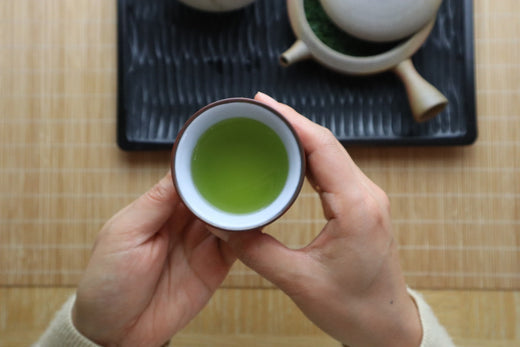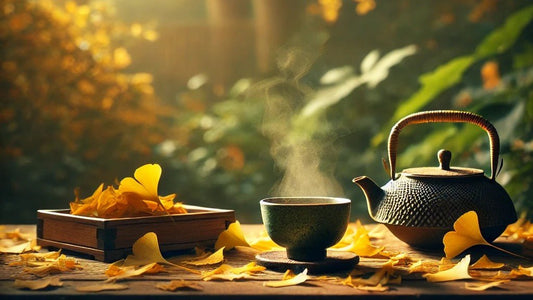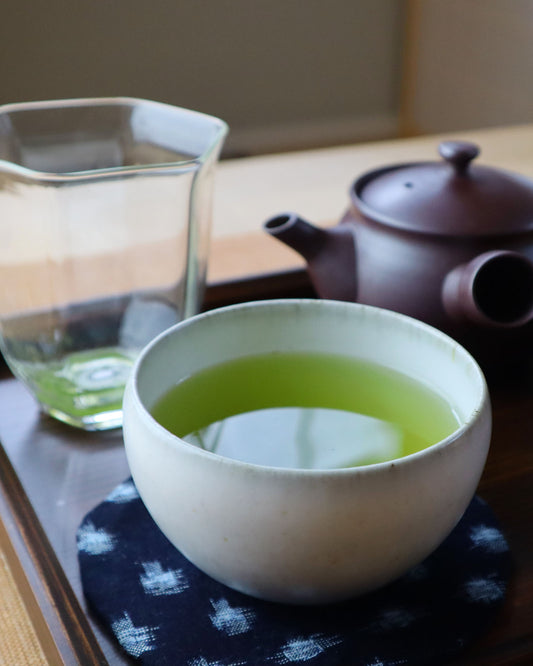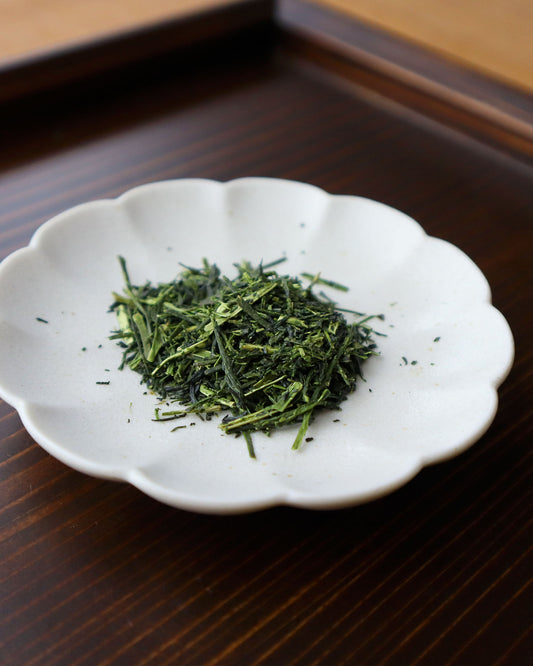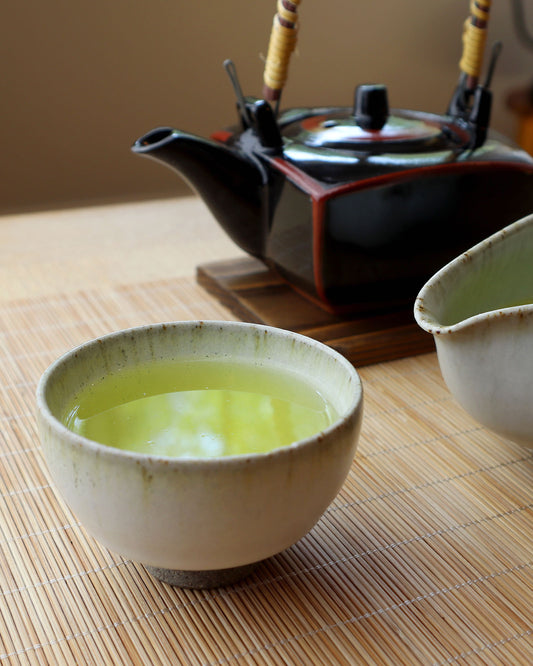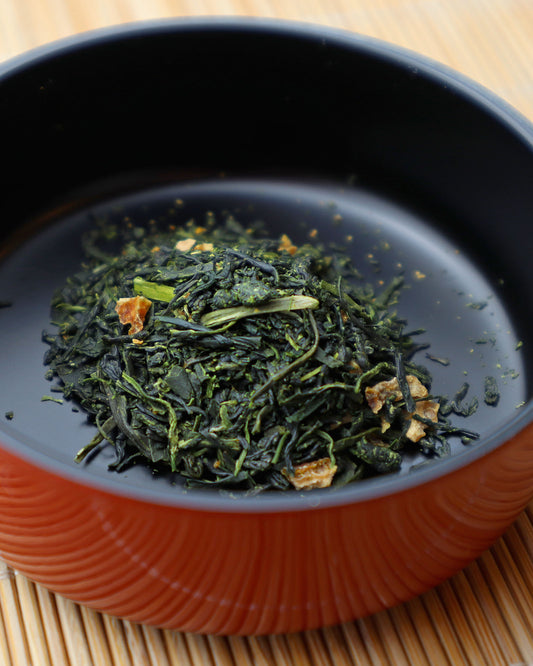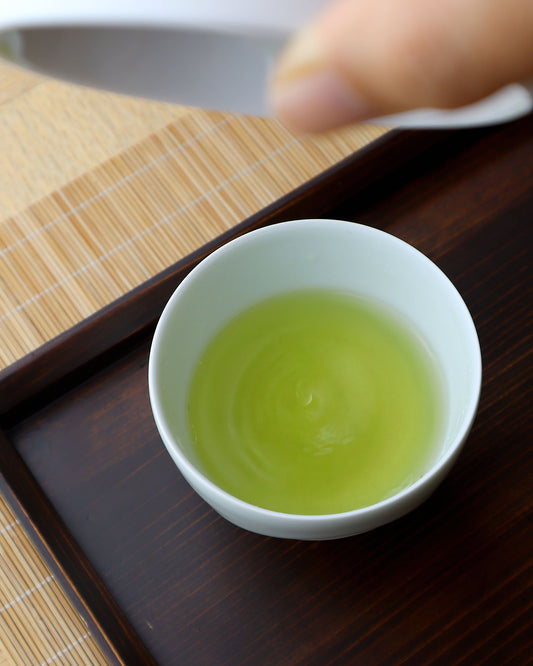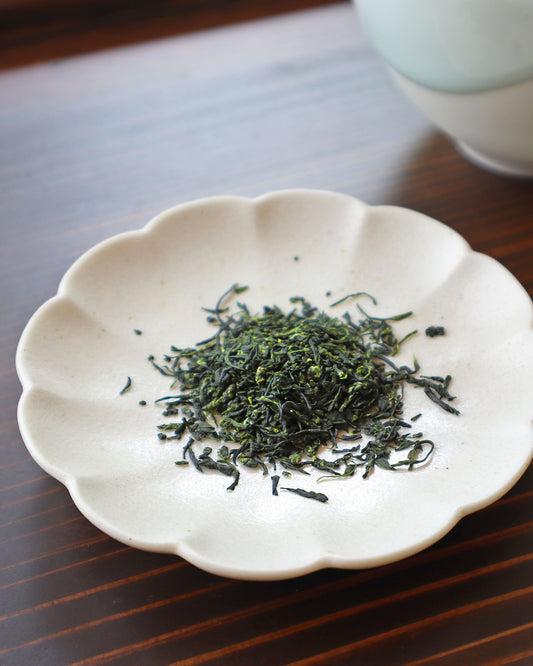Japanese tea culture has evolved over the centuries, producing a diverse array of teas with unique flavors, aromas, and cultural significance. While we look for rare and exceptional teas, including regional teas you may not have heard of before, here are the most common varieties and styles of tea that you'll find in Japan.


Sencha: Japan's Green Tea
Sencha is the most widely consumed and recognizable Japanese green tea. Harvested from the soft top leaves of the first flush of the season, sencha is celebrated for its vibrant green color, grassy aroma, and a refreshing taste that carries a hint of sweetness.
There is a wide variety of flavor profiles that you'll find in high quality senchas, and a lot of terroir. It can also be processed in different ways to pull out different nuances - above you can see a light-steamed asamushi next to a deep-steamed fukamushi sencha.

Matcha: The Ceremonial Elixir
Matcha, renowned for its use in the traditional Japanese tea ceremony (sado), is a finely ground powder that is stone-milled from Tencha. Grown in the shade to enhance chlorophyll content, matcha yields a vivid green hue. Its flavor is rich, full-bodied, with a bite of bitterness, creating a unique sensory experience. Beyond ceremonies, matcha has found its way into modern cuisine, adding depth and color to various dishes.

Bancha: The Everyday Green Tea
Bancha, harvested later in the season or from lower, larger leaves, offers a milder flavor than sencha. It's cheaper than sencha because of the larger, tougher leaves it's made from. In Japan, this is the everyday tea. It's the tea your grandma would serve in a big teapot at tea time, over a casual lunch with friends. Sencha is more reserved for special occasions or as an indulgence.

Kukicha: Twig Tea
Kukicha, also called or twig tea or stem tea, is made from the stems, stalks, and twigs of the tea plant. It may also include leaf. This unique composition results in a sweet flavor with a nutty undertone, and low astringency. Kukicha is very accessible, is easy to brew well, and is an all-around pleaser.

Hojicha: Roasted Green Tea
Hojicha starts out like a bancha or sencha but is then drum-roasted, imparting a warm and toasty aroma. The roasting process reduces the tea's caffeine content and gives it a reddish-brown hue. With a mild flavor profile and low bitterness, hojicha is a soothing option that can be enjoyed throughout the day.

Genmaicha: Green with Toasted Rice Tea
Genmaicha is a distinctive blend of green tea leaves and roasted brown rice, creating a nutty and comforting flavor profile. High quality genmaichas will often also have popped mochi rice puffs. Sometimes referred to as "popcorn tea" because of the popped rice looking like popcorn, genmaicha is a delightful and approachable tea that offers a unique twist on traditional green tea.

Gyokuro: Jade Dewdrop Tea
There is a tea master saying that goes, "sencha to fill my thirst, gyokuro to fill my soul". Gyokuro is a shade-grown green tea known for its sweet and complex, savory umami flavors. Shielded from the sun for several weeks before harvest, gyokuro leaves have a rich and concentrated taste, with high caffeine content. Considered a luxury tea, gyokuro has it's own unique tea ceremony, and offers a profound drinking experience, often savored during quiet moments of contemplation.

Kabusecha: Covered Tea
Kabusecha is a shaded green tea that falls between sencha and gyokuro in terms of shading duration. It is typically directly covered, rather that the low shade tents set up for gyokuro. This partially shaded cultivation imparts a delicate balance of sweetness and umami, making kabusecha a nuanced and versatile tea that offers a refined drinking experience. These tend to be sweeter teas and are more accessible than gyokuro.

Kamairicha: Pan-fired Tea
Kamairicha distinguishes itself with its unique direct-heat pan-firing process, rather than the steaming method usually used for Japanese green teas. This results in a curly twists of leaf rather than the sharp needles of sencha, and tea with a floral aroma and a taste that is refreshing and grassy. A rare variety in Japan, most common in the Miyazaki region.

Tamaryokucha: Coiled Tea
This rare tea undergoes a unique steaming and drying process, resulting in a distinctly curled leaf and a taste that balances sweetness with tangy hints of citrus. A famous example of tamaryokucha is made in Ureshino in Kyushu, where it is called Guricha. Kamairicha is technically a kind of tamaryokucha, where the drying is done in the pan.

Wakoucha: Japanese Red Tea
Wakoucha, red tea, represents a style of oxidized Japanese tea similar to black tea, but with a distinctly unique different flavor profile. With a deep reddish-crimson color and floral, wet forest notes, the robust flavor of wakoucha is something we've fallen in love with. Still relatively rare even in Japan, wakoucha offers a departure from the more common green teas and makes a great afternoon cup. Also makes a fantastic milk tea.
The world of Japanese tea is full of tradition, craftsmanship, and a profound connection to the region the tea is produced in. This is not an exhaustive list, there are many teas only produced in certain areas. Each tea tells a unique story, one that we're excited to share with you.
Whether you prefer the comfort of sencha, the ceremonial elegance of matcha, or the unique characteristics of teas like Kamairicha or Kabusecha, we invite you to join us on a journey of taste, aroma, and culture.


